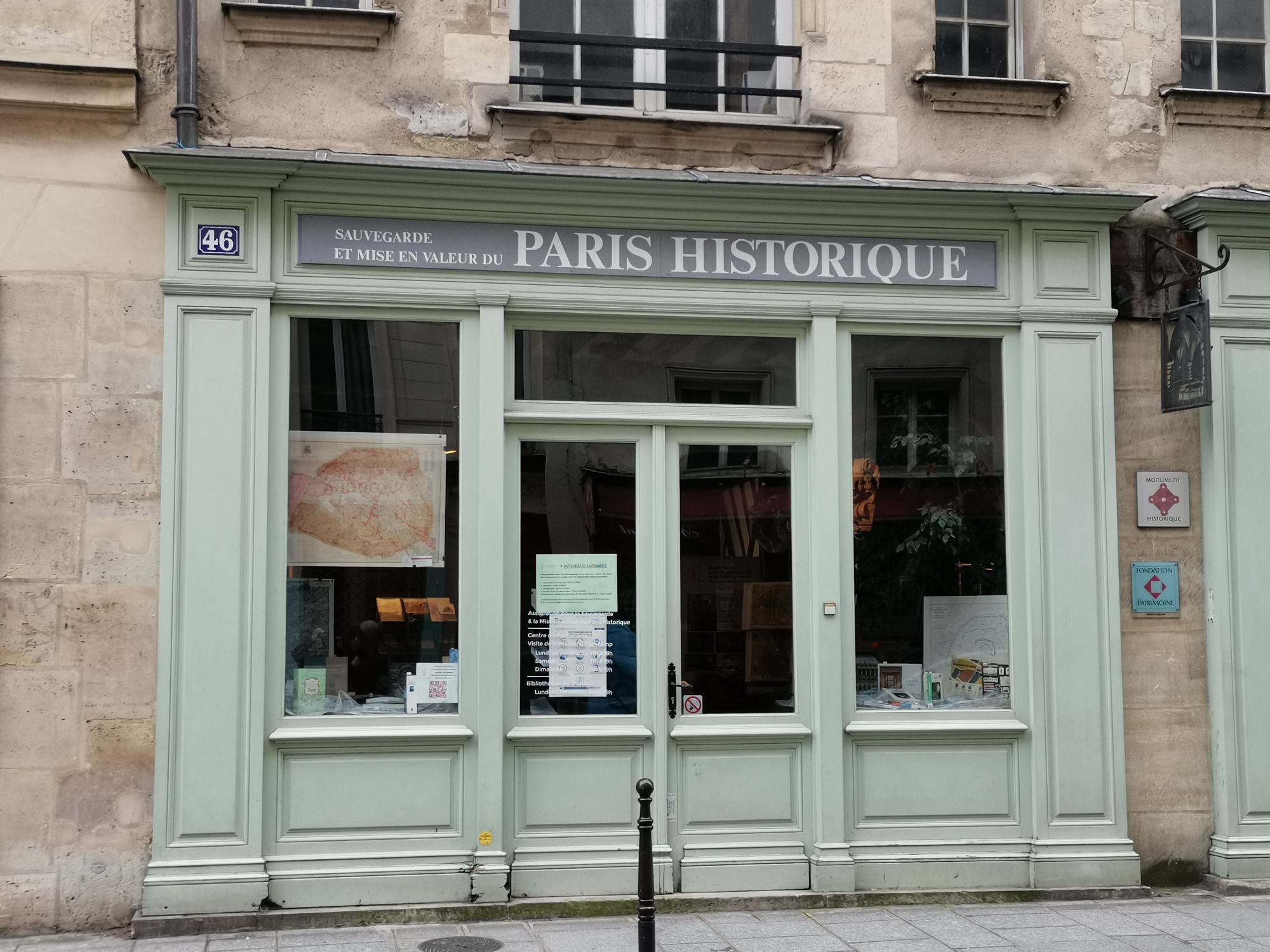House of Ourscamp
 Headquarters of the Association pour la sauvegarde et la Mise en valeur du Paris Historique
Headquarters of the Association pour la sauvegarde et la Mise en valeur du Paris HistoriqueWhere is the Maison d'Ourscamp?
At 46, rue François Miron, 75004 Paris in the Marais district.
When was the Maison d'Ourscamp built?
The Maison d'Ourscamp is a true medieval house, first built in the second half of the 13th century.
It was built on land donated in 1248 by the Cistercian monks of Notre-Dame d'Ourscamp Abbey, near Noyon
in the Oise region.
This house was the Cistercian monks' “town house”. Here, they stored the abbey's harvests and various products for resale on the Parisian markets.
The house was built of stone, and still features a cellar of some 200 m². Originally, there was also a pillared room on the first floor and an upper floor. What remains of the house today is the Gothic cellar, part of the first floor paving and the remains of a large fireplace.
A new version of the Maison d'Ourscamp was born in the 16th century, as the original house was rented out by the monks to merchants and craftsmen from the Marais district. It was rebuilt around 1585, and split into three separate houses (on the sites of today's numbers 44, 46 and 48 rue François-Miron). These buildings still stand at numbers 44-46. They comprise a main body with a stone façade, pierced by large mullioned windows and smaller openings. At the rear, two wooden staircases frame a small timber-framed courtyard with two private corbelled windows. The house has three storeys and a two-storey attic under a French roof. The two dormer windows opening onto the first attic level feature sculpted pediments in the 16th-century style.
You can admire this facade from the street, and active members of the Association are on hand at reception to show you around the first floor, the cellar and the timber-framed Renaissance courtyard.
How did the Maison d'Ourscamp evolve during the French Revolution and into the 19th century?
During the French Revolution, all religious orders were dissolved. The monks of Ourscamp Abbey were expropriated, and the house was sold to a succession of Parisian merchants who continued to add to and transform the building until the 20th century. Gradually, the Marais district, which had known the splendor of 17th-century townhouses, began to deteriorate considerably.
In 1964, the Maison d'Ourscamp became the headquarters of the association Paris historique.
During the first half of the twentieth century, the building continued to deteriorate, and the house became part of îlot insalubre 16, one of 17 insalubrious islets identified in the capital at the beginning of the twentieth century.
In October 1961, the threat became clearer, and the City of Paris planned to demolish the buildings from 30 to 48 rue François Miron.
[The Association pour la Sauvegarde et la Mise en Valeur du Paris Historique, created in 1963, took a stand against this destructive measure, and after lengthy discussions, the City reversed its decision and agreed to the restoration of the old houses, with the exception of 44 and 46, judged to be in too poor a condition. The restoration was paid for in full by the association.
[In 1964, the Maison d'Ourscamp became the headquarters of the association Paris historique.
The Maison d'Ourscamp today
Today's Maison d'Ourscamp is one of the oldest houses in Paris that can be visited.
It has preserved :
[Its 13th-century Gothic cellar;
The first floor and upper floors, built around 1585, have been largely preserved: the façade, staircases, wooden structure and roof are all original;
The courtyard behind the building has retained its original timber-framed walls and two corbelled private courtyards.
The Gothic cellar, wooden staircase, facade and roof are all listed historic monuments.
Today, la Maison d'Ourscamp is both :
An information center
The home and starting point for some of the Association's activities;A library and photo library for consultation.
A heritage site
It's also possible to take a guided tour of the house by Association volunteers: visit the Gothic cellar and the half-timbered courtyard. You can visit the Association Paris Historique website for practical information (opening days and times, for example).
Back to Patrimoine Historique du Marais